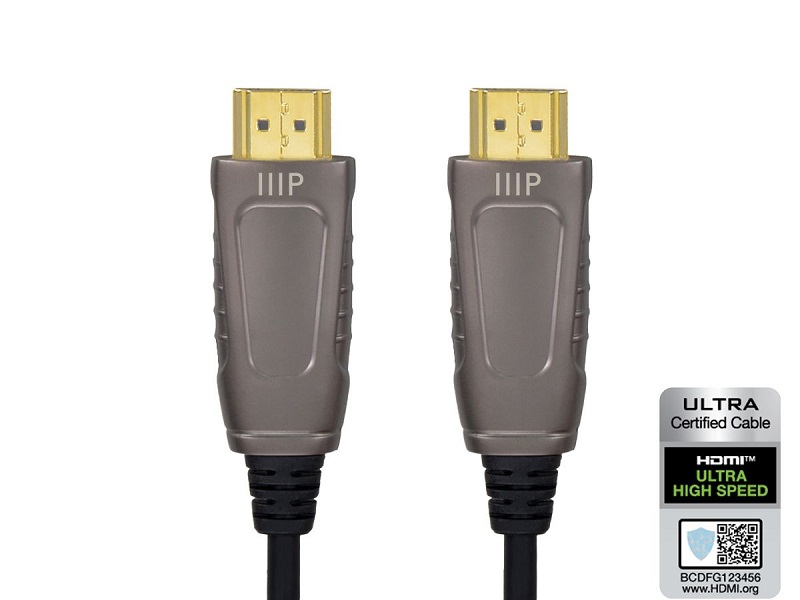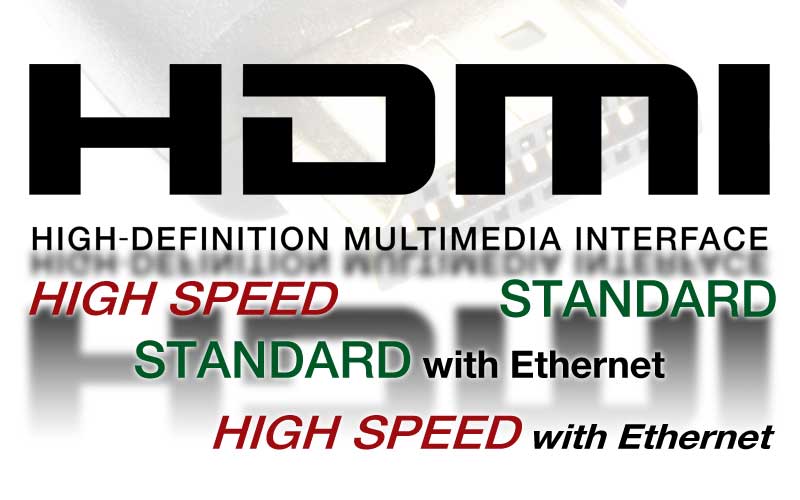Why HDMI Has Been Horrible for Consumers
If you spend any time on the Internet looking for solutions for home theater problems, you’ll find a common theme: HDMI. HDMI often is the most confusing and inexplicably complex part of any home theater system. It should work. Everything on every device says that you shouldn’t be having the problems that you are. When you do your research, you find out that HDMI is somehow not working as you expected. HDMI has been horrible for consumers. Why? What went wrong? Let’s discuss!
HDMI Isn’t For You
HDMI was sold to consumers as a single cable solution. Before HDMI, we used component video cables and optical or coax cables for audio. Component video required three RCA cables (Red, Green, and Blue). If you didn’t have newer devices, you might have to use analogue cables for audio which would be a single RCA cable for each channel of audio. You might have up to 11 cables just to get audio and video from one source! That’s a lot of cables!

But HDMI was never about helping consumers reduce their cable load. Instead, it was about adding HDCP. HDCP or High-bandwidth Digital Content Protection is designed to keep you from making copies of your content. Before HDMI, you could plug all of those analogue cables into a computer or device and burn a copy of your content. Heck, they made dual players (VHS, cassette, others) just to copy content. the studios were so concerned about piracy, they pushed HDMI hard in order to stop piracy.
If you are thinking, “But…I can copy my content if I want to?!? There are lots of piracy sites out there.”
Yeah, we know. We are still stuck with HDMI even though it didn’t work.
Poor Design
The biggest problem with HDMI and one of the main reasons it has been horrible for consumers is the design. The cable consists of many small wires that consistently run out of bandwidth if the cable isn’t made to a high enough quality. At the time, we already had optical cables. We now know that optical has all the bandwidth you need, Heck, it is the ONLY option for long HDMI runs. When HDMI was released, they insisted on a “unique” cable that was, in fact, supremely inferior. We’ve been paying the price ever since.
The Connector Sucks
When HDMI was released, we had two main cable types: RCA and optical. RCA is a friction-fit connection that grabs onto the port very tightly. Optical has always had a locking connection that “clicks” when you connect it to the port. HDMI has neither of these.

It is a friction-fit without much friction. It could have a locking connection but doesn’t. Remember, HDMI is horrible for consumers not because it is a legacy connection but because it was poorly designed. HDMI is new. They could and should have anticipated potential issues. The cable is heavy and pulls on the connector. They should have implemented some sort of connector that would combat these easily anticipated issues. They didn’t.
Features Are Suggestions
One of the major missteps of the HDMI implementation is the lack of enforcement. HDMI will come out with a new version with a bunch of new “features.” They’ll announce that their new HDMI cable will be capable of doing X, Y, and Z. Consumers will see that a device is compatible with that HDMI version and think that it can do all of those things.

Wrong!
When HDMI releases a new version with new features, it is up to manufacturers to implement them. They may or may not catch on. HDMI with Ethernet is a perfect example. HDMI cables can “share” the Internet connection of connected devices. If one device is connected to the Internet, any device that is connected to that first device via HDMI should be able to share that Internet connection.
Except it can’t. Because manufacturers never implemented the feature.
HDMI has no power to force manufacturers to implement features. They also have no control over how those features are implemented. That is why HDMI CEC is such a mess.
The First Rule of HDMI is We Don’t Talk About HDMI
The most horrible part of HDMI for consumers is that HDMI doesn’t want you to talk about the version numbers. The HDMI group just hates it when you talk about which version of HDMI is supported. Look at the back of an AV receiver and you won’t find HDMI version numbers. You’ll find “4k” or “HDCP 2.2” but not “HDMI v2.1.” This is because HDMI doesn’t want the cables or ports labeled with the version numbers.

If you scroll back up and read the previous section of this article, you’ll understand why. If the HDMI version is specified, then consumers will expect those features. Since there is no guarantee that those features will be implemented, HDMI doesn’t want the version number to be specified.
Until Recently, There Was No Oversight At All
For a long time, the only way you could know if your HDMI cable would work was to plug it in and hope. There was no testing or certification process at all. Troubleshooting HDMI has been notoriously difficult. Consumers were left in the dark as to whether or not the HDMI cable that they installed in their wall would work for the next iteration of HDMI.
Recently, HDMI has started offering certification of HDMI cables. Now you can look for their certification logo and know (probably) that the cable can carry the signal that you are sending through it. Until they release a new version at least.
Take Away
HDMI has been horrible for consumers. It was always meant to service the content creators packaged in marketing trying to convince you that it was in your best interest. If you look at HDMI as a whole, the picture is in Ultra High Definition. They wanted a cable that would stop you from copying their content but didn’t want to force manufacturers to do anything they didn’t want to do. Now we have a cable that causes as many (if not more) problems than it solves. It is a constant source of problems in consumers’ homes. But hey, at least you only have one cable that is the issue.


